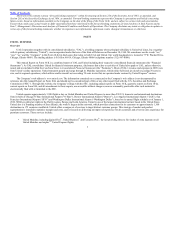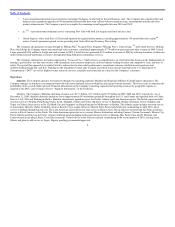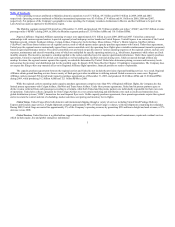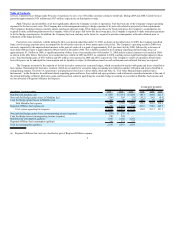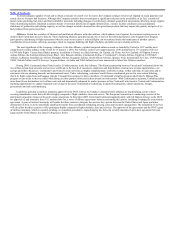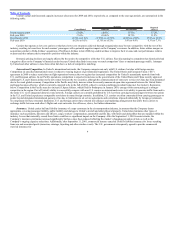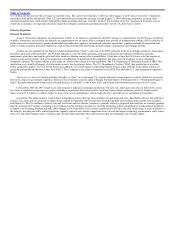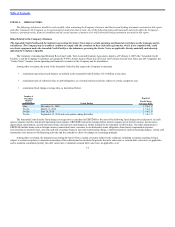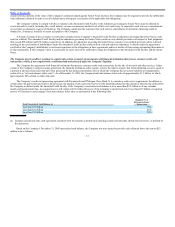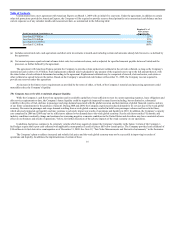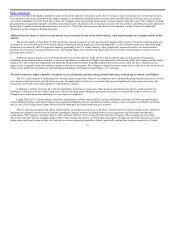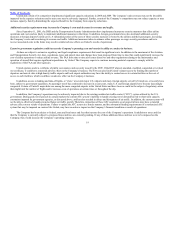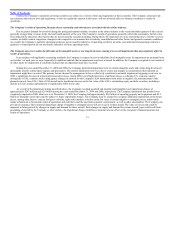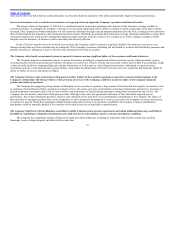United Airlines 2009 Annual Report Download - page 17
Download and view the complete annual report
Please find page 17 of the 2009 United Airlines annual report below. You can navigate through the pages in the report by either clicking on the pages listed below, or by using the keyword search tool below to find specific information within the annual report.
Table of Contents
investigation and remediation costs at locations that have been identified as requiring response actions. The Company also conducts voluntary environmental
assessment and remediation actions. Environmental cleanup obligations can arise from, among other circumstances, the operation of aircraft fueling facilities and
primarily involve airport sites. Future costs associated with these activities are currently not expected to have a material adverse affect on the Company’s
business.
Employees
As of December 31, 2009, the Company and its subsidiaries had approximately 47,000 active employees, of whom approximately 82% were represented
by various U.S. labor organizations. The employee groups, number of employees and labor organization for each of United’s collective bargaining groups were
as follows:
Employee Group
Number of
Employees Union (a)
Contract Open
for Amendment
Public Contact/Ramp & Stores/Food Service Employees/Security Officers/Maintenance Instructors/Fleet
Technical Instructors 14,811 IAM January 1, 2010
Flight Attendants 12,892 AFA January 8, 2010
Pilots 5,632 ALPA January 1, 2010
Mechanics & Related 4,678 Teamsters January 1, 2010
Engineers 218 IFPTE January 1, 2010
Dispatchers 164 PAFCA January 1, 2010
(a) International Association of Machinists and Aerospace Workers, Association of Flight Attendants—Communication Workers of America, Air Line Pilots
Association, International Brotherhood of Teamsters, International Federation of Professional and Technical Engineers and Professional Airline Flight
Control Association.
Collective bargaining agreements are negotiated under the RLA, which governs labor relations in the air transportation industry, and such agreements
typically do not contain an expiration date. Instead, they specify an amendable date, upon which the contract is considered “open for amendment.” Contracts
remain in effect while new agreements are negotiated. During the negotiation period, both the Company and the negotiating union are required to maintain the
status quo.
During the second quarter of 2009, the Company began negotiations with its labor unions as all of United’s domestic labor contracts became amendable
during January 2010. Consistent with its contractual commitments, United served “Section 6” notices to all six of its labor unions in April 2009 to commence the
collective bargaining process. In August 2009, United filed for mediation assistance in conjunction with three of its six unions–the Air Line Pilots Association
(“ALPA”), Association of Flight Attendants–Communication Workers of America (“AFA”) and the International Association of Machinists and Aerospace
Workers (“IAM”). In January 2010, the Company also filed for mediation assistance in conjunction with another of its unions, Professional Airline Flight Control
Association (“PAFCA”). These filings were consistent with commitments contained in current labor contracts which provided that the parties would jointly
invoke the mediation services of the National Mediation Board (“NMB”) in the event agreements had not been reached by August 1, 2009. While the labor
contract with the International Brotherhood of Teamsters (the “Teamsters”) also contemplates filing for mediation, the parties have agreed to continue in direct
negotiations. The current contract with the International Federation of Professional and Technical Engineers (“IFPTE”) does not contemplate filing for
mediation. The outcome of these negotiations may materially impact the Company’s future financial results. However, it is too early in the process to assess the
timing or magnitude of the impact, if any.
13


